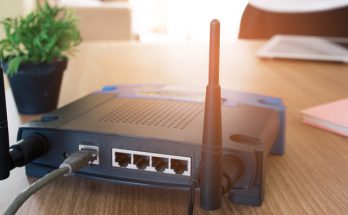The advancement of smart home technology has come a long way and now you have your own automated home setup. Voice-activated gadgets for everyone and everything minimal waste with maximum comfort and toast on a remote timer. No modern convenience is beyond the household that is willing to embrace the latest and best technology. The concept of smart homes doesn’t just mean that you can get the gadgets and be done with it. You need a stable enough high-speed internet connection that can handle all the activities of your brand new smart home. You need to have an internet connection that is widespread enough to keep all your devices connected throughout your home. Make sure you are adequately informed about taking care of your devices properly. In this article, we will be discussing all the topics if your internet setup is ready for your smart home gadgets.
How Fast Is Your Internet Connection?
Getting all the smart gadgets for your home and setting them can be easy but if you don’t have an internet connection fast enough then that can be a big problem. Till you get your internet connection fixed or upgraded, your smart home gadgets are worth nothing. So the first question you need to ask yourself is if your internet connection is fast enough to handle your smart home connection.
You need to think about whether you have enough internet speed in general. Do you often have opening ordinary web pages? Or do you get buffering while trying to watch YouTube videos? Does your family has to take turn using the internet due to limited bandwidth? If the answer to all the questions listed above is yes then you are in a dire need of an internet connection update.
In general, you need about 5 MBPS to download speed for every dozen devices in your home. Note that’s the total number of devices not the type of devices available in your home. This will be an important thing to remember when you are installing smart lights and speakers around your home.
There is an expectation to this is about the devices that stream content. In this case, the media and the definition of the media will decide the kind of speed you need for the devices. You should have an extra 5 MBPS for each device available. If you’re gonna stream content on a lower quality, then you can reduce the speed for each device.
If you have a broadband connection that offers 100 MBPS download speed, you shouldn’t have to worry about speeds unless you have a home filled with smart devices. Anything less than 100 MBPS is something that needs to be upgraded.
Do You Have Full Network Coverage?
It won’t matter the speed of your internet connection if your connection doesn’t cover your whole home. Even if your network speed can compensate somewhat for a poor network strength, your smart devices still need a connection that is stable enough. Smart devices require a consistent and reliable connection to work efficiently, which you deserve for the money you’ve spent. To make sure you have complete coverage, make sure of the following steps:
- The first step is to walk around your home and testing internet strength in every corner of the home. You can do this with a simple speed test app on your smartphone.
- You might find the right kind of coverage everywhere, but the speeds may differ around your home. Make sure these tests are accurate as they can help you find the right internet speeds.
- If you are having limited internet connectivity in some parts of your home. You may wish to install WiFi Range Extender throughout your home to increase the connection strength. Different WiFi Range extenders come at a different cost so you need to do a little bit of research.
If you have a smaller yard, then you can simply install a router that is powerful enough or get more range extender to get enough signals in the yard.
Where To Get Started With Your Smart Home?
While you should generally work with what all the gadgets you love and what you feel you will use the most. There are a few items and sub-setups that you might wish to install. Doing this will allow you to get the most efficiency out of your smart home setup.
1. Digital Assistants
When you talk about digital assistants, you think of Alexa, Google Assistant & Siri. While these devices do tie up almost all the smart devices in your home, they also act as an effective internet access point handled by voice commands. This makes a digital assistant a brilliant choice as a stepping stone for your smart home.
These digital assistants make those steps so much easier and more intuitive. With these devices, you can often link smart home functions with simple voice commands, more easily get information status and reports.
If you are worried about privacy, intrusiveness, or confusion regarding your smart assistants. If you aren’t okay with setup then you don’t have to use it. Although having a digital assistant is something that will make things worse.
When you talk about digital assistants, you think of Alexa, Google Assistant & Siri. While these devices do tie up almost all the smart devices in your home, they also act as an effective internet access point handled by voice commands. This makes a digital assistant a brilliant choice as a stepping stone for your smart home.
These digital assistants make those steps so much easier and more intuitive. With these devices, you can often link smart home functions with simple voice commands, more easily get information status and reports.
If you are worried about privacy, intrusiveness, or confusion regarding your smart assistants. If you aren’t okay with setup then you don’t have to use it. Although having a digital assistant is something that will make things worse.
2. Smart Home Hubs
A smart home hub becomes more necessary as the number of devices and gadgets increases in your home. If you don’t know what Smart home hubs are for then you can consider them as a translator for your smart devices. The smart hub allows all your devices to work together even if they aren’t made by the same manufacturer. They aren’t ideal and they may not be able to make every combination of devices workable. Though they can make your life efficient.
3. Heating & Cooling Systems
One of the most common examples of smart homes is the heating and cooling systems. The automated system allows you to either lower or increases the temperature of your home. You can even control the situation from your office or car. You can get the smartphone app for your smart devices.
Your internet set up will find that these systems don’t consume that much of bandwidth. Still, you should make sure that your connection is stable, so there are no malfunctions that accidentally turn your home into a sauna or a freezer.
4. Smart TVs & Entertainment Devices
Smart TVs aren’t exactly smart home devices but with the advancement of technology, smart TVs are getting pretty smart. They have improved their ability to connect and some devices have digital assistants with voice command included in them. It is a simple process to connect your smart TV with other entertainment devices. Plus with a voice command, you can control your TV and entertainment setup without even moving from your place.
Entertainment devices require a lot of remotes for controlling them. With smart entertainment devices, you can connect to your devices with simple voice commands. Smart speakers and smart home entertainment systems can easily connect with other devices throughout your home. Once you get a smart speaker setup, the wiring does not need to be hard, with a high-speed internet connection, you can get high-quality sound all throughout your home.
Conclusion
As stated above, there are several factors that you need to consider when it comes to choosing the right smart home setup. As you start setting up devices throughout your home, you will start understanding the need for devices other than we have listed above. You absolutely need to have a high-speed internet connection to switch your ordinary home into smart homes.




